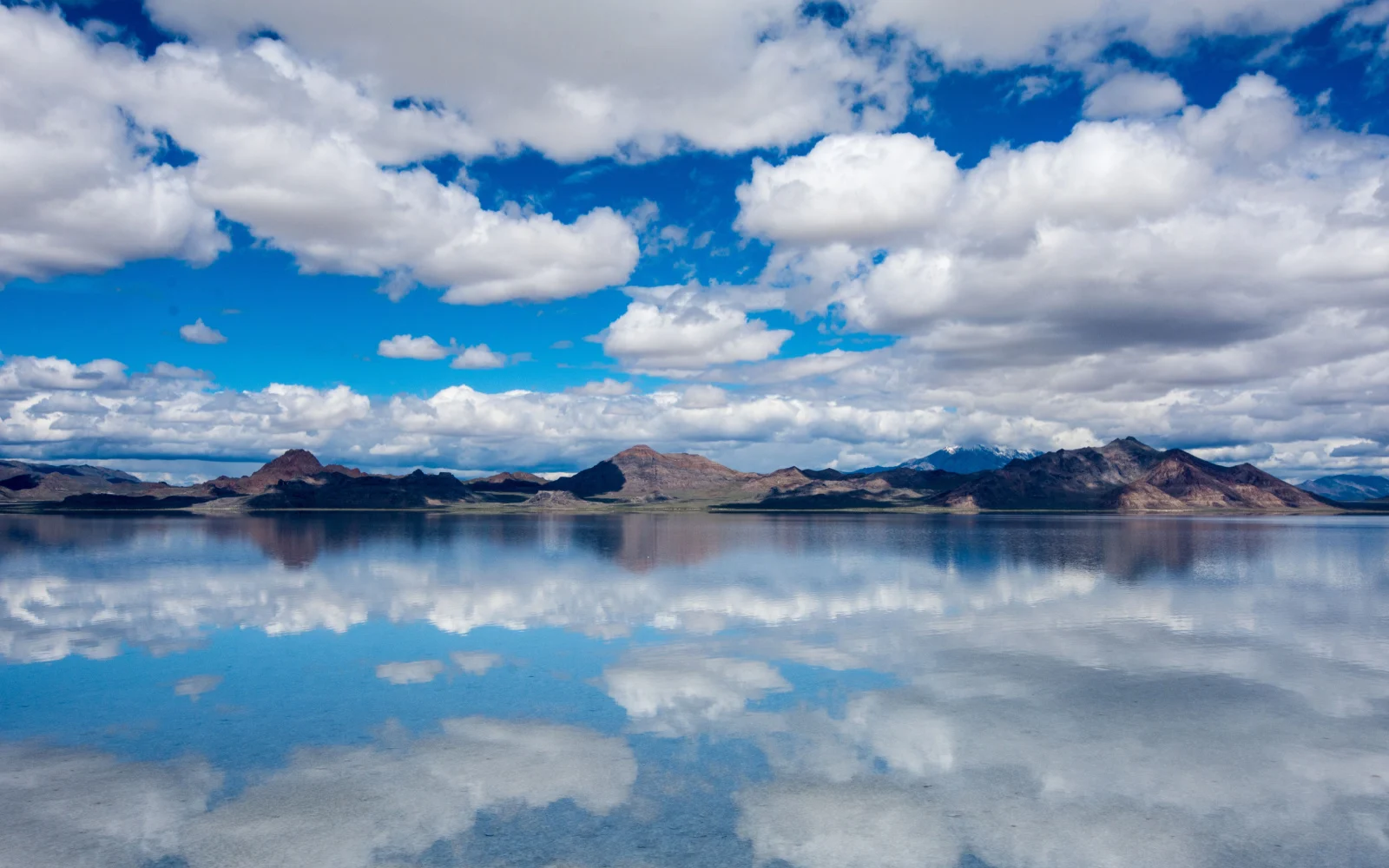What's the best time to visit the Bonneville Salt Flats?
The best time to visit the Bonneville Salt Flats is from mid-June to late August. During this period, the weather is dry and warm, ideal for outdoor activities like ATV riding. It’s also when the area is most accessible, with the salt flats being firm and perfect for driving. For those interested in racing, August is when the Bonneville International Speed Week takes place.
A famous tourist destination in Utah, the Bonneville Salt Flats attract visitors with their unrivaled natural beauty. Whether you’re just curious, looking for an unusual adventure, or have always wanted to attend one of the races at the flats, you won’t be disappointed.
However, the time of year you go can make or break your adventure, so it’s important to learn when the best time to visit Bonneville Salt Flats is. We’ll show you when to go to avoid crowds, bad weather, and more. Let us be your guide!
The Overall Best Time to Visit Bonneville Salt Flats
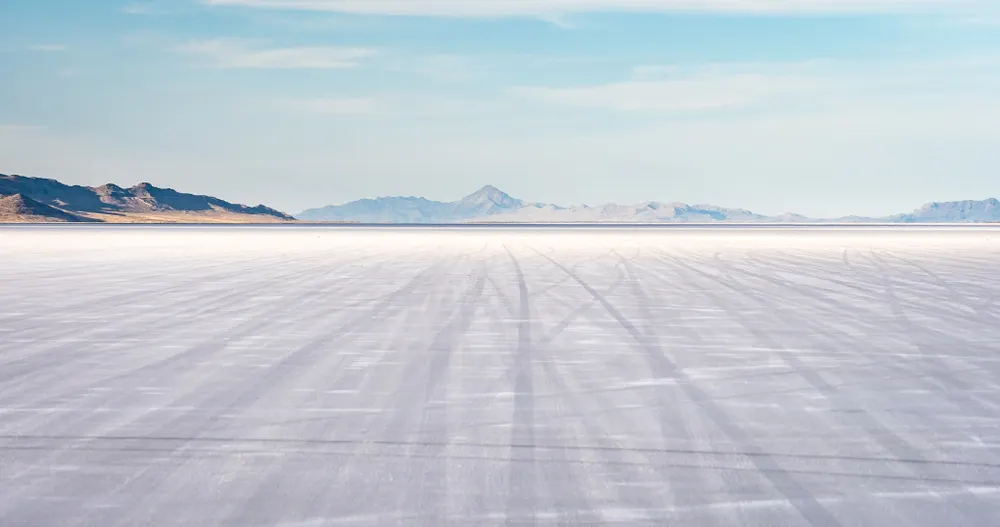
Guillermo Olaizola/Shutterstock
The best time to visit Bonneville Salt Flats is during the mid-June – late August period. It’s the ideal time for outdoor sports activities and enjoying warm and dry weather.
In June, temperatures range between an average high of 83°F and an average low of 61°F. July sees temperatures fluctuating between 92°F and 71.°F July is the month with the most sunshine.
In August, visitors can expect temperatures ranging between 89°F and 69°F. These months (June in particular) have the most favorable conditions for ATV riding.
The salts are dry thanks to the summer temperatures and very low levels of precipitation, which means driving on the land is a piece of cake. Advanced drivers can enjoy the land, but beginners will also definitely benefit from the vast area, as they can drive as far as they want.
July visitors should head to Salt Lake City and explore the city’s major attractions. August is known for the Bonneville International Speed Week.
A major annual racing event, the Bonneville International Speed Week welcomes contestants with custom-designed vehicles. Bystanders are free to enjoy the event while watching racers set new speed records.
Cheapest Time to Visit Bonneville Salt Flats
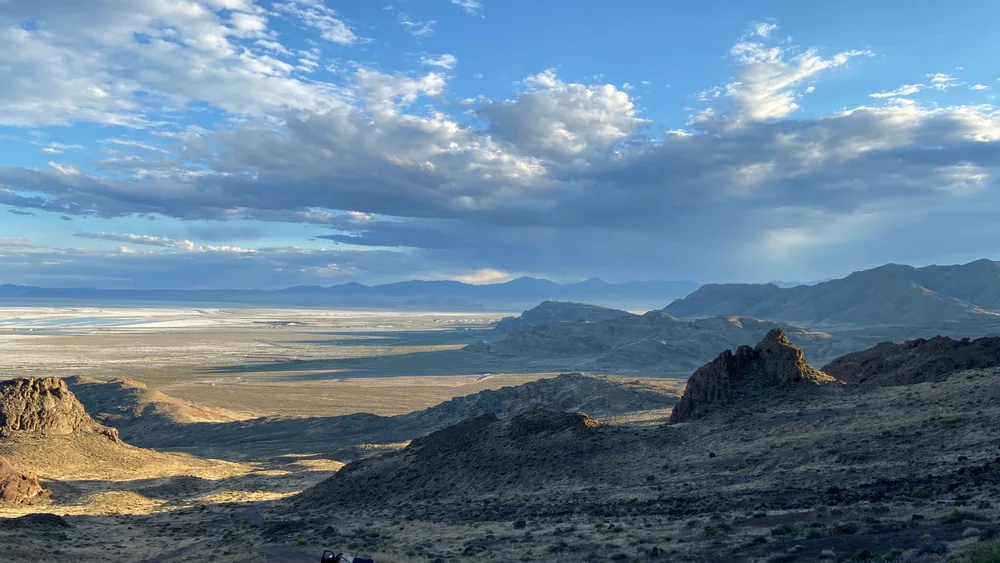
Sathish Raj PR/Shutterstock
The cheapest time to visit the Bonneville Salt Flats is from December to February. December has temperatures fluctuating between 36°F and 20°F.
In January, temperatures range between 35°F and 19°F. January is the most humid month in the entire year, with 75%. February welcomes visitors with temperatures with an average high of 41 °F and an average low of 24°F.
It’s also the month with the least sunny days. Winter months are ideal for visiting neighboring areas. If you happen to be in the Bonneville Salt Flats in December, you must pay West Wendover a visit as well.
Hotel prices are low, as it’s the off-season, and the weather is damp and unpleasant most of the time. However, going to West Wendover means visiting awesome restaurants, hotels, shops, and casinos, all of which are unaffected by the grumpy weather.
In January, you can visit the so-called “Tree of Life.” An abstract 87-foot-tall piece, the sculpture’s mission is to colorize the otherwise plain, salty scenery.
With its soggy flats in February, the area allows for a wide range of fun activities, such as building salt castles or engaging in salt ball fights with fellow travelers.
Least Busy Time to Visit Bonneville Salt Flats
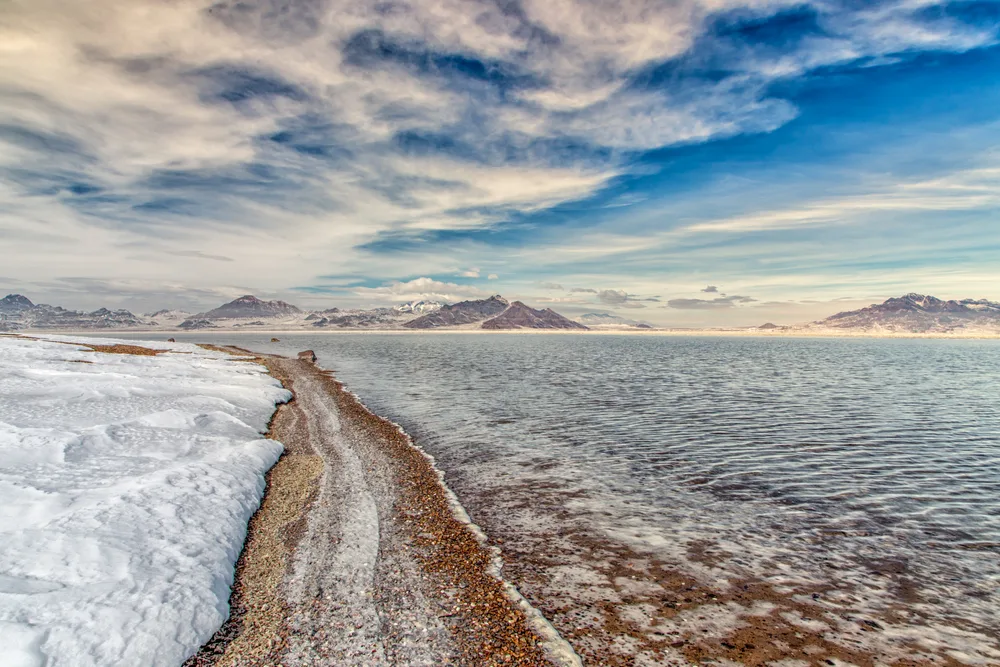
Ken Wolter/Shutterstock
The least busy time to visit the Bonneville Salt Flats is either during the December–February period in winter or from March through May in spring.
Visiting in the winter shoulder season means having plenty of time and space to enjoy the entire area individually. Going in the spring shoulder period allows you to avoid the intense summer heat and high temperatures while having the flats to yourself.
Spring is the ideal time to hike. If you’re not really into hiking while visiting the flats or are skeptical about hiking in general, keep in mind the white salt takes the hiking game to another level.
April marks the opening of camps, so visitors interested in camping in the Bonneville Salt Flats should get ready for a salty adventure and iconic scenery. The Bureau of Land Management Special Recreation Area is great for camping.
May is reserved for athletic events such as the Salt Flats Endurance Runs. Ready to push yourself as hard as you possibly can? Sign up for the challenge and see how much you can endure.
In terms of the weather, March has temperatures fluctuating between 52°F and 33°F. In April, temperatures range between 60°F and 41°F. May sees temperatures between 70°F and 50°F.
Worst Time to Visit Bonneville Salt Flats
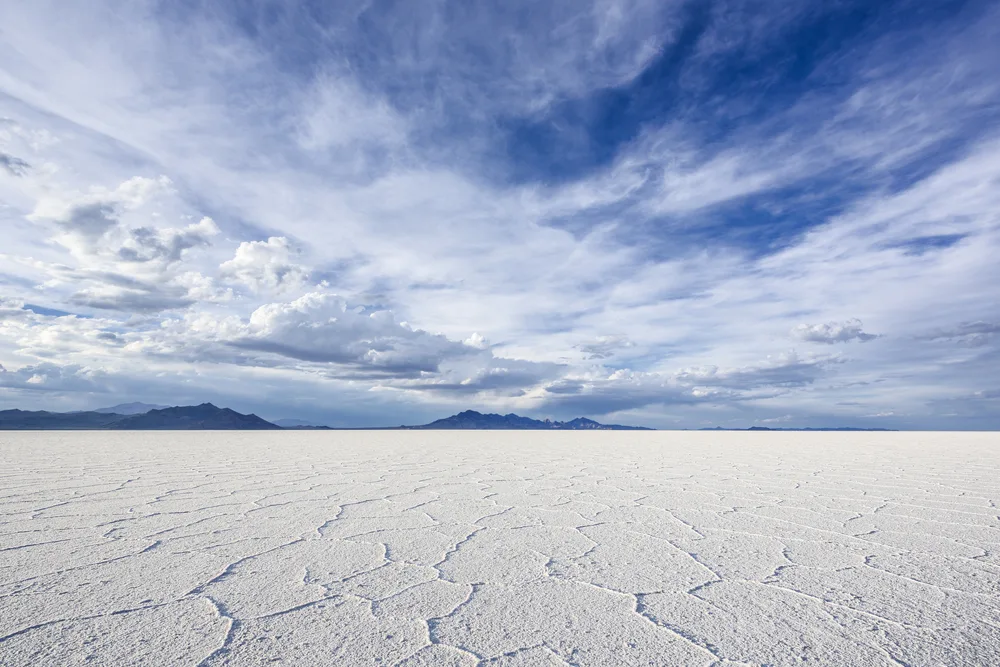
Andriy Blokhin/Shutterstock
The worst time to visit the Bonneville Salt Flats is during the their muddiest time, late March through early July.
In late spring and early summer, the region gets rainy, which translates into muddy flats. Many people get their cars stuck in the mud at this time, which can really put a damper on your trip.
Plus, this is quite a remote area we’re talking about, so getting the necessary help may be somewhat challenging (not to mention how expensive it is to get your car towed!).
That said, people enjoy visiting the flats at this time because the flooded flats create a nice mirror effect — you can see the mountain reflection in the crystal-clear flats. Quite the Instagramable view!
Things to Consider
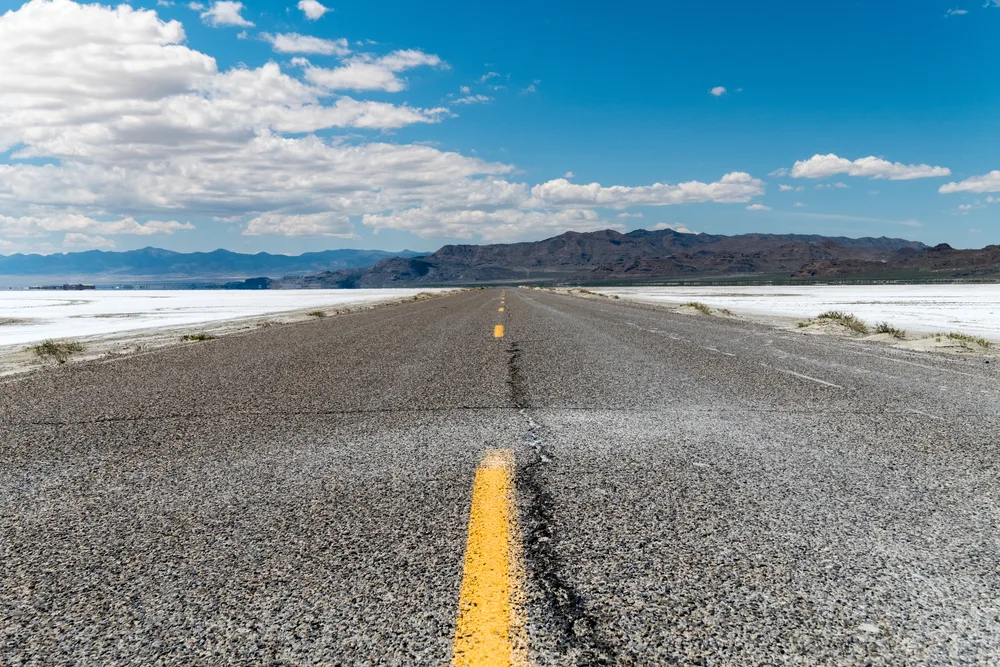
Marquicio Pagola/Shutterstock
Apart from knowing the best time to visit Bonneville Salt Flats, there are many other aspects worth considering:
- The sun reflects on the surface producing a blinding light. Wearing sunglasses is more than recommended, but if you visit in summer, don’t forget to bring an SPF cream along too. Wide-brimmed hats are also a must.
- If you’re planning on staying longer in the area, bring enough water, as well as food. With the nearest place being Wendover, there are no shops or restaurants in the area whatsoever.
- While driving on the flats, do your best to stay in the white part of the land. The darker parts could be covered in mud, which means your car can easily get stuck. When passing puddles, drive slowly. Follow the tracks other vehicles have left.
- There are no facilities in the Bonneville Salt Flats, so make sure to use the restroom before you arrive. That said, if you reach the salts from the East, you can access the Salt Flats Area Westbound, which features a fountain to wash one’s shoes and restrooms. A similar area overlooking the south side is the Salt Flats Rest Area Eastbound.
So, What’s the Best Time to Visit the Salt Flats?
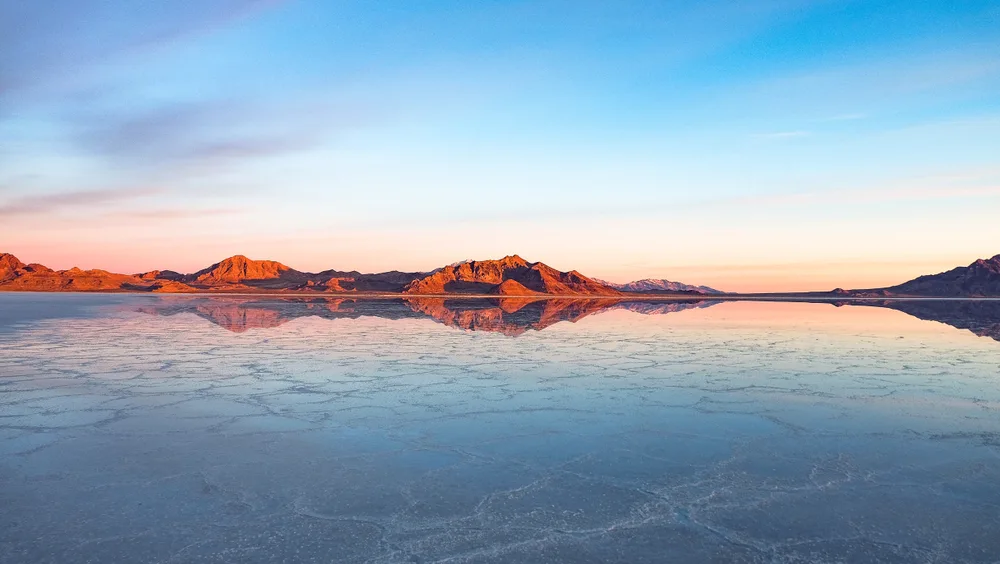
Ashley Hadzopoulos/Shutterstock
If you wish to plan the ideal Bonneville Salt Flats visit, the best time to do so is during the mid-June – late August period. With the weather being dry and sunny, the number of visitors peaks at this time of the year.
But regardless of when you decide to go, you’re armed with all the necessary information to ensure an awesome visit. Just enjoy it, and remember to take a lot of photos along the way!



